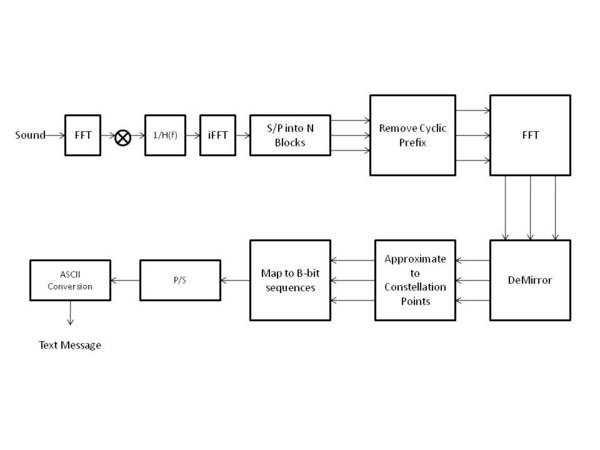| << Chapter < Page | Chapter >> Page > |
Since the receiver has full knowledge of all the steps taken to transmit, the reception process is the exact inverse of transmission. The only difference is the addition of the channel equalization described in the previous part. To get back the information we originally sent, we simply:
Please see the block diagram below. It summarizes the reception process.


Notification Switch
Would you like to follow the 'Discrete multi-tone communication over acoustic channel' conversation and receive update notifications?